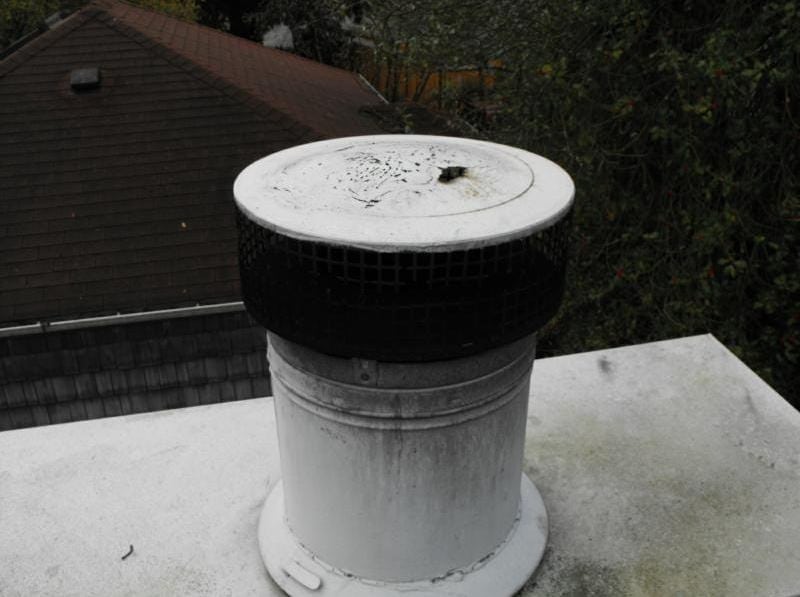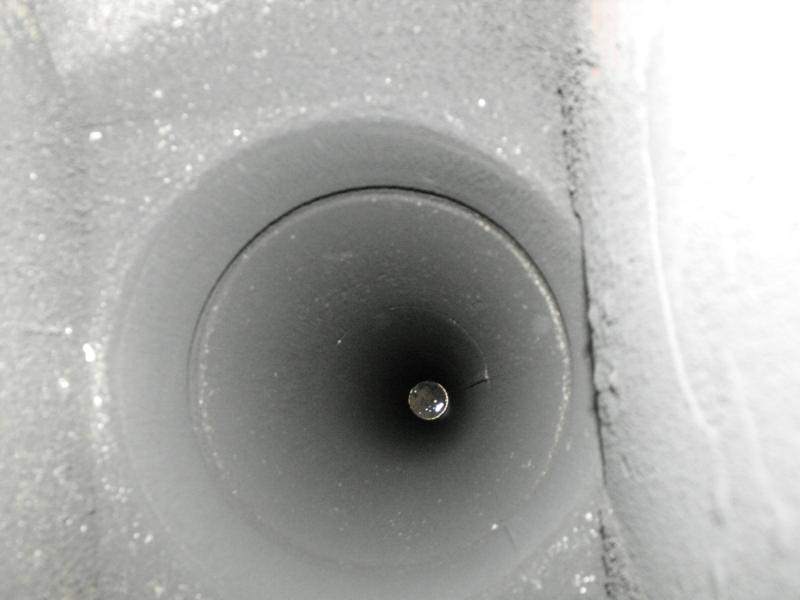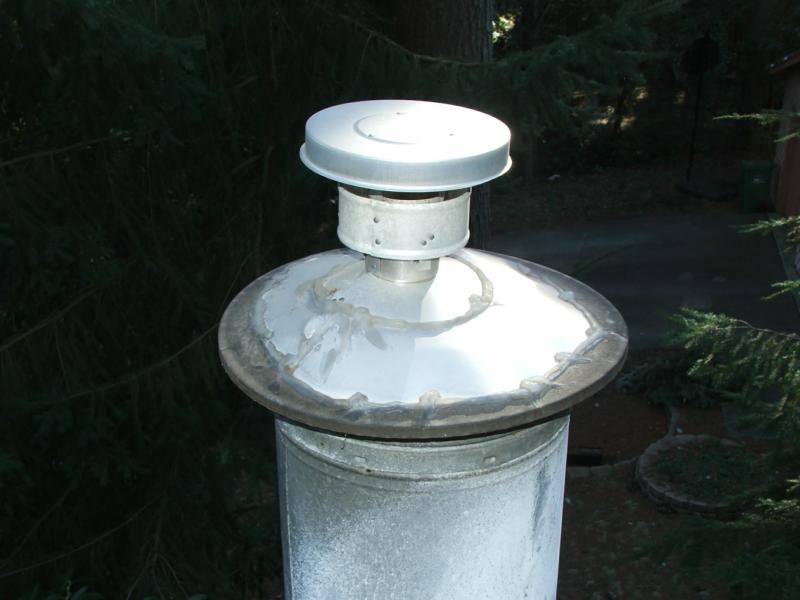It is wood burning season around the country once again!
One of the spin-offs from the energy “crisis” of the 70’s was an increased interest in wood burning stoves and fireplace inserts. Wood burning stove companies, like Vermont Castings and Jotul, were literally resurrected from the terminal disease of disinterest. Efficiencies were greatly improved—-including reductions in pollution emissions, making the units even more

attractive. It also fit in with many people’s interest in a return to “basics” and romantic notions of wood burning. Another thing that gave these heating units a push was the advent of factory built insulated metal chimneys. These chimneys allowed for the stoves and fireplaces to be installed just about anywhere because the weight of bulky/expensive masonry chimneys did not have to be factored into the equation.
Some of these chimneys were what are called “triple wall” chimneys in which air brought from out-doors circulates between the layers to keep the outer layer cool enough to be close to wood structures. These chimneys have a stainless steel inner liner with the outer two layers being galvanized steel. These chimneys are vulnerable to the same aging issues associated with any galvanized materials that are exposed to the elements and have a much shorter life expectancy than their more expensive cousins that were constructed (usually) of two stainless steel layers and the space between was filled with insulating materials—-originally asbestos.
Both of these types of pipes had very specific installation requirements. Proper clearances to combustibles needed to be created and maintained. It is common for problems to occur when these clearances are not maintained and the surface of the pipe is allowed to overheat.
As a builder I had a very real and very scary “learning moment” of my own regarding what can happen if these clearances are not maintained. Often this pipe is run in chases within the walls of the interior of the home until it exits through the roof. Baffles in the attic are installed to prevent insulation from coming in contact with the pipe. Care has to be taken to keep debris and insulation from getting into the baffle space as well as into the space around the pipe where it is concealed inside the wall.
One day as I left the job site and headed off to the lumber yard to get materials, I looked in my rear view mirror to see black smoke billowing out of the soffit vents above the clerestory windows—-kind of like what the oven looks like when turkey catches on fire. It did not take a rocket scientist to know what had happened. Somehow there had been a breach of the enclosure around the pipe and the chase had filled up with blown-in cellulose fiber insulation.
My workers thought I had a usual screw loose as I came roaring into the house and up the stairs. At the base of the chimney chase, the drywall was too hot to touch and the drywall screws were melting the paint. Whoops. Fortunately there was no actual “fire” in the sense of flames. The cellulose fiber, while being the unwitting accomplice in the problem, was doing a good job of containing the smoldering and preventing the whole chase from going up in flames—-which in all likelihood would have destroyed the home. After we tore off the drywall, it was a fairly simple matter to remove the smoldering insulation and hose down the charred framing of the chase. Several of the studs were completely turned to charcoal at the base of the wall. This was the closest I ever came to losing a house during construction. (I had another one where I could not get to the house for a month because the area was off limits due to a raging forest fire—but that is another story.)
The event has made me very pro-active when it comes to evaluating homes that have this type of chimney installed. Many of them can not be inspected at all due to being concealed in chases. As these chimneys age, it behooves anyone buying a home with a metal chimney (or any kind of solid fuel chimney for that mater) to have them carefully and invasively inspected by a qualified chimney sweep.
Take a look at the cap on this 1981 metal chimney.

It is difficult to see in the picture, but the spark arrestor/vermin screen is badly deteriorated and there are obvious holes through the top of the cap. At the very least this cap will need to be replaced. This next picture was taken looking up through the chimney from the fireplace. All those white spots are holes through the cap.

I often have buyers ask me, “So, how does the inside of the chimney look?” I think you can see from this picture why that question is very difficult to answer within the context of a home inspection and why having the chimney professionally cleaned and evaluated is important. It is impossible to tell much of anything about this flue other than it needs cleaning, there are holes in the cap, and there are no birds or bees nests in the pipe.
This next picture shows a pipe connection visible in the attic that did not get put back together properly when the roof was replaced. Discoloration from where smoke has entered the attic at the gap is obvious. At least this connection was visible in the attic. It would not be so visible inside a chase.

One solution to a lot of these aging installations is to convert the chimneys to gas fired stoves and fireplaces. Here is a picture of a chimney that has been re-lined and capped for a new gas fireplace insert.

Crude but hopefully effective—–all of that caulking will at the very least need considerable maintenance—-or perhaps a more appropriate adapter to the smaller pipe liner would be a better long term solution. Removing the original chimney below the roof line would be a better solution and let the new vent come through the roof on its own—-but this would require some patching of the roof.
So as this heating season begins—do you know the condition of your chimney and stove installations?
Charles Buell, Real Estate Inspections in Seattle.





